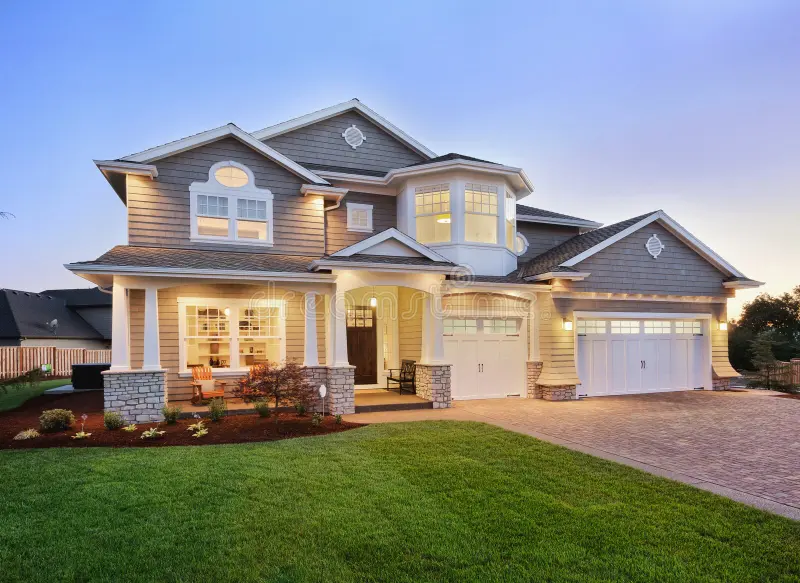As the U.S. moves closer to 2025, the housing market is poised for significant changes. The National Association of Realtors (NAR) economists have outlined several factors expected to shape home sales, mortgage rates, and buyer behavior in the coming year. From political shifts to generational preferences, here’s a detailed look at what lies ahead in the housing market.
Election Results to Play Major Role in Housing Confidence

One of the biggest wildcards in the 2025 housing market is the outcome of the 2024 U.S. elections. NAR experts suggest that political stability and economic policies following the election will directly impact buyer confidence and housing affordability.
According to NAR’s housing trends report, uncertainty surrounding government policies on interest rates, taxes, and mortgage lending standards could cause homebuyers to delay decisions until early 2025. On the other hand, a decisive political direction could create a wave of confidence, encouraging more people to buy or sell.
Mortgage Rates: Gradual Decline Expected in 2025
Mortgage rates have been a major hurdle for homebuyers in recent years, rising to levels not seen in over two decades. However, NAR’s chief economist, Lawrence Yun, predicts a slow but steady decline in rates throughout 2025.
“The Federal Reserve may start easing its stance on interest rates after evaluating inflation and job growth,” Yun said in a recent NAR press release. “We could see 30-year fixed mortgage rates drop below 6% by mid-2025, which will ease affordability concerns.”
While this may not return us to the ultra-low rates of 2020, it could significantly improve conditions for first-time homebuyers and investors alike.
Changing Buyer Demographics Reshape Market Demand
A critical shift taking place in the 2025 housing landscape is the rise of younger buyers—especially Millennials and Gen Z. As Baby Boomers continue downsizing, the younger generations are stepping up to enter the housing market with different preferences and priorities.
Millennials, now in their 30s and 40s, are looking for affordable suburban homes with space for remote work and growing families. Meanwhile, Gen Z prefers walkable neighborhoods, sustainable designs, and tech-integrated homes.
According to Zillow’s 2024 Consumer Housing Trends Report, over 60% of Gen Z buyers said smart-home features and eco-friendly appliances are must-haves in a new home. This trend is expected to influence what kind of properties developers focus on in 2025.
Inventory Crunch Easing but Still Tight
Housing inventory continues to be a challenge in many metro areas. While the number of new listings is expected to increase slightly in 2025, supply is still far from meeting demand.
Builders are cautiously optimistic about ramping up construction, especially for affordable housing, but material costs and labor shortages continue to slow progress. According to the National Association of Home Builders, the supply chain is recovering, but not fast enough to meet the pent-up demand.
Experts say that unless there is a significant increase in homebuilding—especially in entry-level housing—the market may continue to favor sellers in the early months of 2025.
Urban Areas Losing Steam to Suburbs and Smaller Cities
One of the biggest transformations in the housing market is geographic. While big cities like New York and San Francisco still see activity, there is a clear trend of homebuyers moving to suburbs and secondary cities in search of affordability and better quality of life.

NAR data shows rising demand in places like Raleigh, Boise, and Austin. These areas offer lower costs of living, growing job markets, and better space—all things post-pandemic buyers care about.
Real estate agents across the country report that buyers are more open to relocating if it means they can afford a larger home and work remotely. This decentralization trend is likely to continue throughout 2025.
Home Prices to Stabilize in Mid-to-Late 2025
After rapid growth in home prices from 2020 to 2022 and a slowdown in 2023–2024, experts predict that 2025 will be a year of price stabilization. Home prices are expected to increase modestly—between 1% and 3%—depending on the region.
Yun explains, “While price corrections happened in some overheated markets, others have remained strong. The 2025 market will see fewer bidding wars and more balanced negotiations between buyers and sellers.”
This cooling off period could finally give new buyers a fairer shot at homeownership, especially in places where prices had outpaced income growth.
Investor Activity to Remain Strong
Even with market uncertainties, real estate continues to attract investors. Rental demand is expected to rise in 2025 due to ongoing affordability issues, keeping rental yields attractive in many markets.
Institutional investors, such as hedge funds and real estate trusts, are likely to maintain a strong presence, especially in suburban build-to-rent communities.
However, some economists warn that heavy investor activity in entry-level housing may reduce availability for individual homebuyers. Policymakers may explore regulations to protect owner-occupiers.
Final Thoughts: What Should Buyers and Sellers Do Now?
With so many moving pieces—elections, mortgage rates, shifting demographics—2025 will require buyers and sellers to stay informed and flexible. Real estate professionals recommend getting pre-approved for mortgages early, working with experienced agents, and watching interest rate trends closely.
If you’re planning to buy, the first half of 2025 might still feel competitive. But if predictions about declining rates and rising inventory hold true, the second half could be more favorable.
For sellers, this year may be the last chance to maximize returns before prices fully stabilize. Pricing realistically and staging your home for younger buyers could make all the difference.
Stay updated with regular housing market insights from NAR’s research portal and trusted real estate news platforms.
Summary: A Transitional Year for U.S. Real Estate
The Housing Market Outlook for 2025 signals a transitional year driven by political outcomes, interest rate trends, and changing buyer expectations. Whether you’re buying your first home or investing in your next one, preparation and timing will be key to success in 2025.
Also Read – Record January Trade Deficit Raises Economic Red Flags






